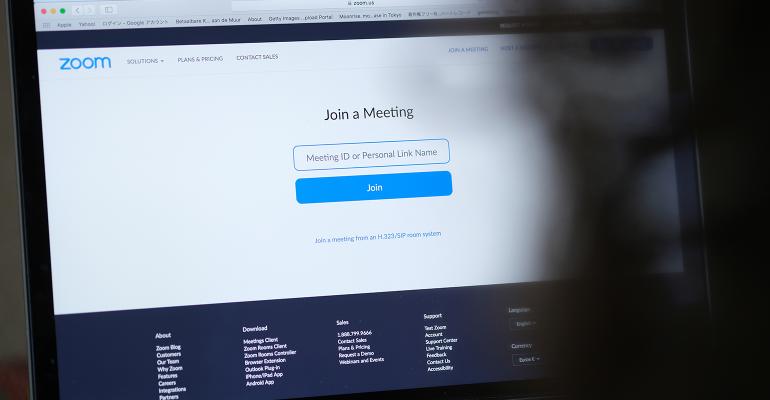The pandemic has been a crash course for larger firms and broker/dealers in the dos and don’ts of digital events. Despite the approval of new vaccines and plans for widespread distribution, we are still looking at another quarter or two—perhaps longer—of virtual versus in-person gatherings.
Event planners find the process of bringing people together to learn, network and have some fun to be incredibly rewarding, from booking venues and finding speakers to building agendas and watching guests happily interact. At the end of the day, this job is about helping people to engage with one another while providing valuable content and connection.
In 2020, it became clear that Hightower’s events would have to be retooled—and fast. In the process, we learned a lot about bringing people together while keeping them safely apart.
Here are four tips for event planners in the financial services industry:
1. Start From Scratch
When faced with the prospect of revamping an in-person event into a remote format, your first instinct may be to try to make it a digital copy of your original plan. Let me tell you firsthand, that instinct is wrong.
An in-person, three-day conference can be an escape for attendees. They travel to a new city, meet peers in person, eat good food and learn about their industry from top thought leaders. In-person conferences typically feature a packed schedule for the whole day, with sessions broken up with bonding exercises, lunch breaks, coffee hours and cocktail parties that make the time go by quickly.
Now look at where we are today: The idea of spending eight-plus hours watching a virtual conference from the confines of our homes seems pretty grim, and for parents playing double-duty as professionals and homeschool teachers, it’s downright impractical.
Instead of trying to make the event an online duplicate of an in-person plan, savvy event planners must tear everything up and start over from scratch. Consider your audience in this virtual setting: What is going to provide value to them? What is your core mission? How can you deliver on this mission while keeping the attention of attendees?
2. Keep it Short and to the Point
Instead of eight-hour days packed with content, virtual conferences must be short and concise. For example, our firm hosted our first fully remote conference, the Virtual Investment Forum, back in July. While the in-person event would have been three full days of content, we opted to provide our advisors and staff with a condensed digital event. Over the course of three days, sessions took place between noon and 2 p.m.—sort of a long lunch. Outside of those two hours, attendees had the rest of their day to work as normal.
Because we had very little time in which to deliver upon our core mission for the event—to educate advisors on the latest investment trends—we had to make sure the content we provided got straight to the point. There was no fluffy filler—just information advisors could use going forward. We also used a Q&A chat function so that attendees could easily get clarification from speakers and participate from afar.
3. Find a Reliable Tech Partner
More than half a year into the pandemic, we have probably all attended a few virtual events that did not quite go as planned. From audio issues to problems with visuals, chat functions and loading screens, if attendees have problems accessing the content you’re providing, they’re not going to get much out of the experience.
Customer service is of the utmost importance when choosing a tech partner. Sure, you can spend your whole budget on a big name with all the integrated bells and whistles, but if you can’t get a fast response when something goes wrong, your event is toast. Look for companies that have a proven record of pulling off seamless events, with a special focus on customer service.
Even when in-person events are again safe to attend, I believe virtual events are here to stay. Look out for a post-vaccine surge in the “hybrid” conference model, which includes both an in-person and virtual component.
4. Add in a Little Fun
While keeping things short and sweet is ideal for digital events, don’t be afraid to include a little dash of fun to get people engaging with one another on a more personal level. For our three digital conferences this year, we hosted early morning bootcamp exercises over Zoom, where athletically-minded attendees could break a sweat together. We also made sure to include a digital networking event every evening, such as a virtual cooking class that gave attendees the chance to create a gourmet meal for their families, or a virtual happy hour, with company-provided ingredients for both cooking and happy hours to make it as easy as possible to participate. We also held multiple raffles for attendees, handing out prizes for those who visited the exhibit halls or participated in an optional questionnaire.
The truth is that virtual events are never going to pack the same punch as an in-person experience. But even after vaccines are distributed and the pandemic wanes, virtual gatherings will continue. 2020 has marked such an intense change in our culture, that I don’t see us ever going back to the way things were. Once in-person events are again safe to plan, I’d venture a guess that most companies will probably offer a remote version as well, as many people are going to be reluctant to travel or mingle maskless in a crowd of hundreds.
While these last crazy months were a bit overwhelming, I’m grateful to have had the opportunity to quickly learn how to bring people together to collaborate and exchange ideas in ways we have never before explored. We may be physically far apart, but watching as dogs, cats, kids and partners move in and out of my colleagues’ Zoom screens, I honestly feel closer to them than ever.
Theresa Gralinski is executive director, events and thought leadership at the national wealth management firm Hightower, www.hightoweradvisors.com.





